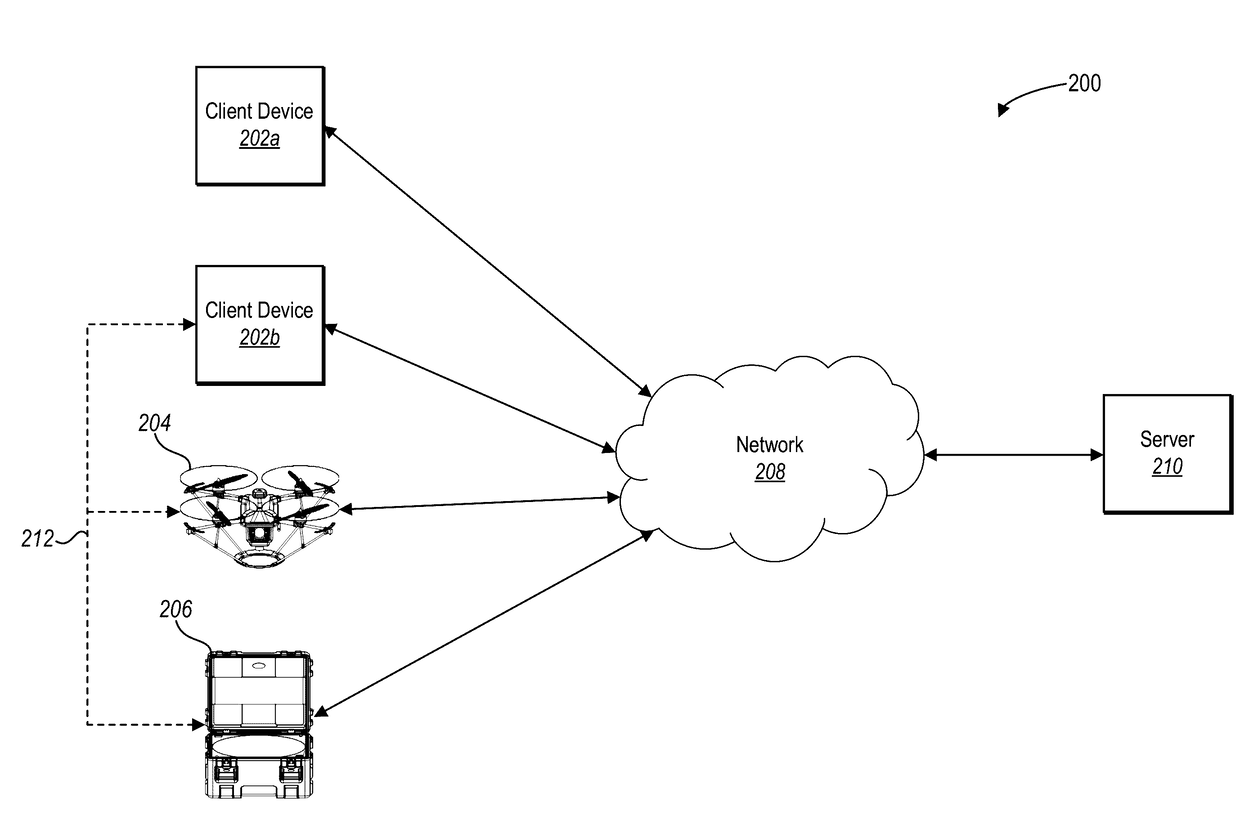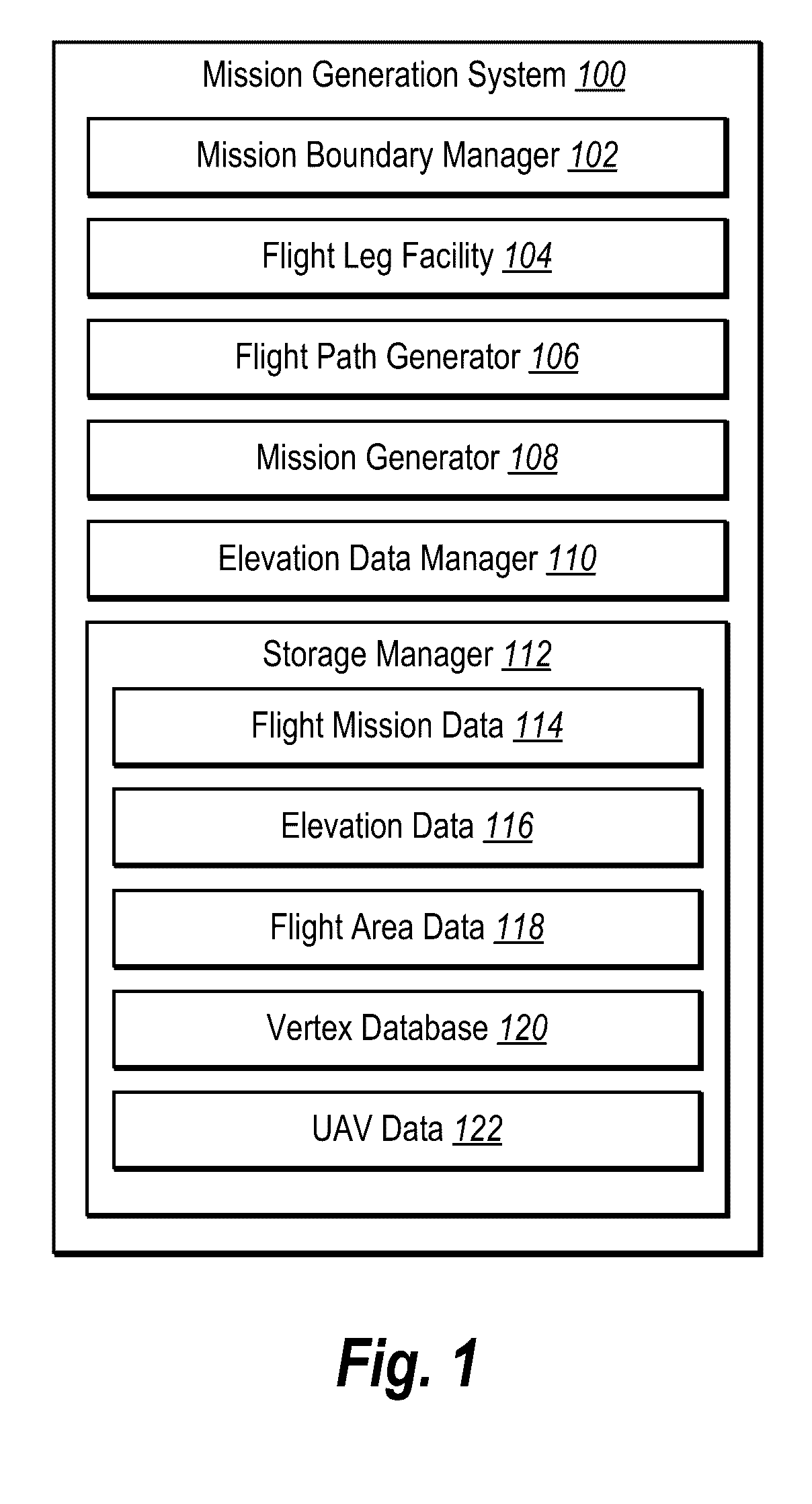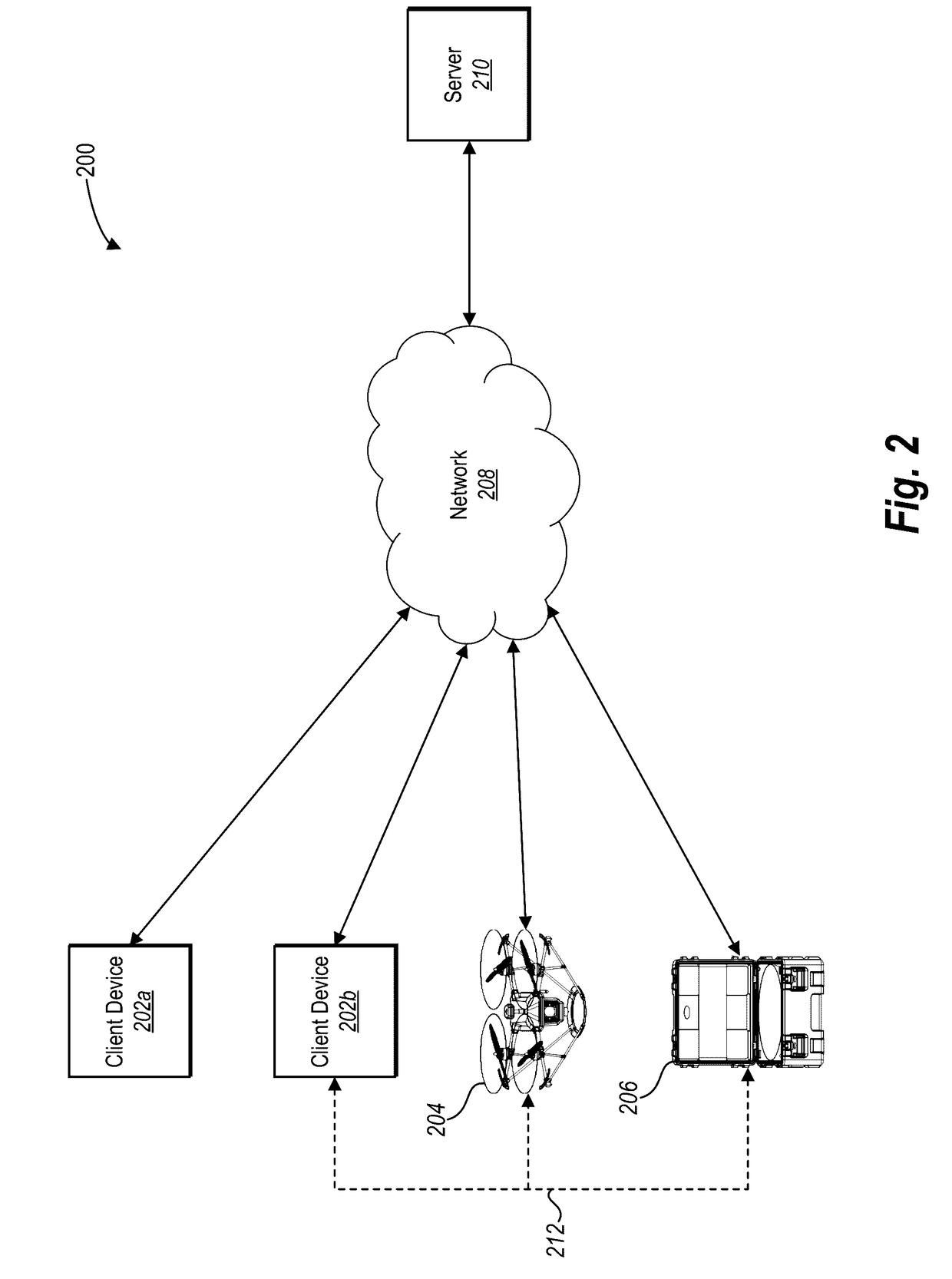Generating a mission plan for capturing aerial images with an unmanned aerial vehicle
a technology for aerial images and mission plans, applied in vehicle position/course/altitude control, process and machine control, instruments, etc., can solve problems such as failure to account for prohibited flight areas, and difficulty in achieving the effect of capturing aerial images
- Summary
- Abstract
- Description
- Claims
- Application Information
AI Technical Summary
Benefits of technology
Problems solved by technology
Method used
Image
Examples
Embodiment Construction
[0039]The present disclosure includes various embodiments and features of a mission generation system and corresponding processes that produce mission plans for capturing aerial images of a target site by a UAV. In particular, in one or more embodiments the mission generation system generates flight legs for traversing a target site and identifies optimal or near-optimal connections between the flight legs utilizing one or more linking algorithms. The mission generation system can generate a flight path that remains within a mission boundary. Moreover, the mission generation system can incorporate the flight path into a mission plan for capturing aerial images of a target site utilizing a UAV.
[0040]For example, in one or more embodiments the mission generation system identifies a mission boundary defining a UAV flight area. Specifically, the mission generation system identifies a mission boundary that encompasses a target site for capturing a plurality of aerial images by a UAV. The...
PUM
 Login to View More
Login to View More Abstract
Description
Claims
Application Information
 Login to View More
Login to View More - R&D
- Intellectual Property
- Life Sciences
- Materials
- Tech Scout
- Unparalleled Data Quality
- Higher Quality Content
- 60% Fewer Hallucinations
Browse by: Latest US Patents, China's latest patents, Technical Efficacy Thesaurus, Application Domain, Technology Topic, Popular Technical Reports.
© 2025 PatSnap. All rights reserved.Legal|Privacy policy|Modern Slavery Act Transparency Statement|Sitemap|About US| Contact US: help@patsnap.com



